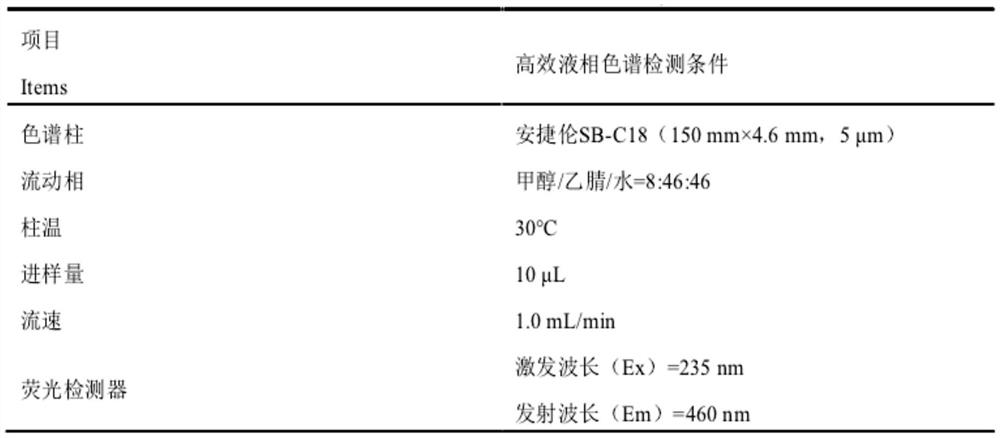Bacillus subtilis and application thereof in degradation of zearalenone
A technology of Bacillus subtilis and zearalenone, applied in the field of microorganisms, can solve the problems of immunotoxicity, liver toxicity, genotoxicity, etc., and achieve the effects of reducing harm, strong stress resistance, and high detoxification activity
- Summary
- Abstract
- Description
- Claims
- Application Information
AI Technical Summary
Problems solved by technology
Method used
Image
Examples
Embodiment 1
[0044] Screening, isolation and identification of embodiment 1 bacterial strain
[0045] The main process of screening, isolation and identification of Bacillus subtilis ZJ-2019-1 is as follows:
[0046] 1. Take 10g of feces samples from a farm in Xingtai, Hebei, and place them in 100mL of improved LB liquid medium, 160r / min, 37°C for 24h enrichment culture to obtain bacterial liquid. Place the bacterial solution at 80°C for 10 minutes, spread it on the plate, and incubate at 37°C for 24 hours.
[0047] 2. Purification of strains
[0048] A single colony was picked for staining and microscopic examination, and the Gram-positive and rod-shaped bacteria were streaked, purified, and preserved.
[0049] 3. Screening of bacterial strains
[0050]Cultivate the strain according to the culture conditions in the above 1 to obtain a fermented liquid, take the fermented liquid and mix it with a certain concentration of zearalenone, and leave it for a certain period of time to measure ...
Embodiment 2
[0055] The cultivation of embodiment 2 Bacillus subtilis ZJ-2019-1 and preparation of fermented liquid
[0056] The cultivation method of Bacillus subtilis ZJ-2019-1 is as follows:
[0057] (1) After activation, Bacillus subtilis ZJ-2019-1 was inoculated in the seed medium for cultivation to obtain seed liquid, and the concentration of live bacteria of Bacillus subtilis ZJ-2019-1 in the seed liquid was 10 9 cfu / mL;
[0058] The formula of the seed medium is as follows: glucose 1%, yeast extract 1%, peptone 2%, manganese sulfate 0.005%, dipotassium hydrogen phosphate 0.2%, magnesium sulfate 0.1%, pH 7.0.
[0059] (2) inoculating the seed liquid obtained in step (1) in the fermentation medium according to the inoculation ratio of 2% to carry out fermentation culture to obtain a fermentation liquid;
[0060] The fermentation medium is an improved LB liquid medium;
[0061] The fermentation culture conditions are: fermentation temperature 37°C, rotation speed 180r / min, fermenta...
Embodiment 3
[0062] The preparation of the fermentation product of embodiment 3 Bacillus subtilis ZJ-2019-1
[0063] The preparation method of the fermentation product of Bacillus subtilis ZJ-2019-1 is as follows:
[0064] (1) After activation, Bacillus subtilis ZJ-2019-1 was inoculated in the seed medium for cultivation to obtain seed liquid, and the concentration of live bacteria of Bacillus subtilis ZJ-2019-1 in the seed liquid was 10 9 cfu / mL;
[0065] The formula of the seed medium is as follows: glucose 1%, yeast extract 1%, peptone 2%, manganese sulfate 0.005%, dipotassium hydrogen phosphate 0.2%, magnesium sulfate 0.1%, pH 7.0.
[0066] (2) inoculating the seed liquid obtained in step (1) in the fermentation medium according to the inoculation ratio of 2% to carry out fermentation culture to obtain a fermentation liquid;
[0067] The fermentation medium is modified LB liquid medium.
[0068] The fermentation culture conditions are: fermentation temperature 37°C, rotation speed 1...
PUM
 Login to View More
Login to View More Abstract
Description
Claims
Application Information
 Login to View More
Login to View More - R&D
- Intellectual Property
- Life Sciences
- Materials
- Tech Scout
- Unparalleled Data Quality
- Higher Quality Content
- 60% Fewer Hallucinations
Browse by: Latest US Patents, China's latest patents, Technical Efficacy Thesaurus, Application Domain, Technology Topic, Popular Technical Reports.
© 2025 PatSnap. All rights reserved.Legal|Privacy policy|Modern Slavery Act Transparency Statement|Sitemap|About US| Contact US: help@patsnap.com



